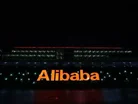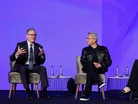Elon Musk’s latest confrontation with Apple over App Store practices has reignited debates about how the world’s biggest platform gatekeepers shape access to AI tools. In a highly visible public push, Musk accused the iPhone maker of anti-competitive conduct, alleging that Apple is actively suppressing Grok, his AI chatbot, while promoting OpenAI’s ChatGPT in App Store rankings. He characterized the situation as an “unequivocal antitrust violation” and warned that immediate legal action would follow. The broader claim centers on a perceived imbalance in how Apple’s ranking systems treat competing AI products, with Grok allegedly disadvantaged in comparison to ChatGPT despite both being strong contenders in the market. These statements have set the stage for a broader discussion about platform power, developer fairness, and the pathways available to AI developers seeking user growth.
In this opening summary, the core dispute is framed as a clash over discoverability on Apple’s App Store. Musk reiterated a central accusation: Apple’s practices make it nearly impossible for any AI company other than OpenAI to attain top visibility. This is significant because App Store rankings are widely regarded as a critical lever for user acquisition and market penetration. Apple itself emphasizes that its rankings and recommendations are built on a mix of usability, user ratings, and reviews, though it provides only limited transparency about how those criteria are weighted in practice. The company has defended its approach, stressing that its goal is safe discovery for users and valuable opportunities for developers, while acknowledging collaboration with many developers to boost visibility amid rapidly evolving app categories. In this framing, Apple positions its platform as a neutral discovery environment that relies on objective criteria to surface relevant apps.
This renewed dispute comes at a moment of heightened attention to how app marketplaces influence AI distribution and competition. The App Store is long considered the primary gateway for iPhone and iPad users to discover software, including AI chatbots. Apple’s public statements emphasize that thousands of apps are featured through a combination of charts, algorithmic recommendations, and curated lists created by experts, all selected using objective criteria. The company underscores its commitment to offering safe discovery pathways for users while providing developers with opportunities to grow their visibility within dynamic categories. Against this backdrop, Musk’s allegations focus not only on the relative rankings of Grok and ChatGPT but also on the underlying mechanisms that determine which apps appear where in the store’s ecosystem.
Background and timeline of the dispute
The spat between Elon Musk and Apple has roots that extend beyond the current quarrel. Musk’s public post on X outlined a sweeping critique of Apple’s App Store ecosystem, asserting that the platform’s practices constitute anti-competitive behavior. The thrust of Musk’s argument is that Apple’s ranking system, combined with its recommendations and charts, creates a landscape in which OpenAI’s ChatGPT is positioned to dominate visibility, while competing products like Grok face structural barriers. This claim aligns with broader industry concerns about whether app stores exert excessive influence over which technologies gain traction, especially in high-growth segments such as AI chatbots.
In parallel, Apple has defended its policy framework by pointing to a broad ecosystem that includes thousands of apps and a mix of algorithmic suggestions and human curation. The company argues that its method for surfacing apps is designed to balance safety, quality, and discovery while maintaining a neutral stance across developers. The spokesperson highlighted that Apple relies on objective criteria and expert input to guide its charts and recommendations, with the intention of helping users discover genuinely useful apps. While the company claims transparency, it also notes that it cannot disclose every nuance of its proprietary ranking system, given the sensitive nature of its algorithms and the risks of manipulation.
From a strategic standpoint, the clash is more than a private debate between two tech titans. It spotlights the competing incentives that shape platform governance, developer livelihoods, and consumer choice. For AI developers, discoverability in the App Store translates into user acquisition, retention, and the potential for monetization through subscriptions, in-app purchases, or other revenue streams. When a dominant player like OpenAI secures top visibility for a widely used product such as ChatGPT, it can set a benchmark that is difficult for rivals to surpass, regardless of the comparative quality or value of competing offerings. This dynamic has implications for the broader AI marketplace, the pace of innovation, and the distribution models that govern AI software in major ecosystems.
App Store visibility: a comparative snapshot of ChatGPT and Grok
A close look at the current state of App Store visibility reveals notable disparities in how ChatGPT and Grok are presented to users. ChatGPT occupies prominent positions across several sections, signaling strong discovery momentum. In the general “Apps” category, ChatGPT is positioned at the top, bolstered by OpenAI’s broader ecosystem and branding. The OpenAI chatbot also appears in a “Must-Have Apps” list and ranks second within the “Popular Apps” area, signaling high user engagement and broad recognition. This multi-pronged visibility underscores how a dominant product can command prime real estate within the store, amplifying its reach and reinforcing its market lead.
By contrast, Grok’s presence appears more constrained. The AI model is visible in the store primarily through the “Top Free Apps” list, where it sits at number five. This placement suggests limited exposure relative to ChatGPT’s category-leading positions, which in turn affects user discovery, download velocity, and the potential for organic growth. Musk’s frustration is evident in his public remarks, where he questioned the exclusion of Grok and the X app from nearly all lists aside from those that measure raw download counts. He contrasted this with ChatGPT’s pervasive presence across lists, labeling the situation as disproportionate and problematic for competition.
The divergence in visibility can be interpreted through multiple lenses. From a product and developer experience standpoint, being featured in top charts and must-have lists can drive a virtuous cycle of adoption: higher visibility leads to more downloads, which can translate into stronger ratings and more favorable algorithmic treatment within the store. For Grok, the restricted exposure may create a bottleneck that makes it harder to reach a broad audience, even if the product offers competitive or superior capabilities in certain contexts. The points raised by Musk emphasize the real-world consequences of ranking dynamics for AI startups competing in a crowded field.
This analysis also invites a broader discussion about the criteria Apple uses to evaluate app quality and relevance. Apple publicly states that charts and recommendations are derived from a blend of usability, ratings, reviews, and other objective factors, but it does not disclose the exact weighting or the algorithmic rules that drive placements. Critics argue that partial transparency can obscure how competitive advantages are constructed in practice, potentially allowing bias toward certain ecosystems, partnerships, or dominant players. Supporters of Apple’s approach contend that the combination of algorithmic and human curation helps protect users from low-quality or unsafe apps while still enabling discovery across a diverse app landscape. The tension between transparency and protection remains a central theme in debates about App Store governance and competitive fairness.
To illustrate the stakes, consider the role of the GPT-5 upgrade in the top-tier placement of ChatGPT. The enhanced model signals continued investment and branding continuity within OpenAI’s ecosystem, which can reinforce top-spot credibility and make the app more attractive to users scanning the store for reliable AI tools. Grok, on the other hand, represents a distinct offering that aims to differentiate itself through architectural choices, feature sets, or user experience decisions. If the ranking system disproportionately favors established entities with broad brand recognition and a proven track record, newer entrants may struggle to gain footholds—even if their products provide compelling value propositions. This dynamic underscores the potential for a self-reinforcing cycle in which incumbents maintain visibility advantages, while challengers face higher barriers to reach critical mass.
The broader AI competition and regulatory backdrop
The dispute sits within a broader panorama of competition and regulation in the AI space. The tech industry has witnessed a growing emphasis on antitrust concerns, with policymakers scrutinizing how major platforms and marketplaces govern access to software and services. In various jurisdictions, questions have been raised about whether app stores wield excessive market power, potentially stifling competition and raising the cost of innovation for developers. The current debate around Apple’s App Store practices intersects with these concerns, emphasizing the importance of fair access, transparency, and predictable rules for all participants in the AI ecosystem.
On the legal front, antitrust enforcement and regulatory oversight have grown more prominent in discussions about AI distribution. A major government framework has focused on ensuring competitive conditions in the smartphone and digital services space, with investigations and lawsuits that probe whether dominant platforms distort competition through their ranking signals, pricing, or exclusive arrangements. In parallel, court rulings related to app distribution and developer rights have begun to shape the practical landscape. For instance, a California court’s ruling that allowed developers to facilitate app sales directly from their own websites represents a potential shift in the balance of power, granting developers more flexibility to reach users outside the central app store channel. International discussions have likewise pushed for reforms, including reductions in fees or changes to commission structures, with arguments that such steps would lower barriers to entry for smaller developers and foster a more dynamic AI marketplace.
The implications for AI distribution are substantial. If regulators or courts press for greater openness and fairness in app marketplaces, we could see policy changes that alter the leverage dynamics between dominant platforms and independent AI developers. Such developments could influence not only who gets visibility in app stores but also how developers plan their launch strategies, pricing models, and cross-platform distribution. The interplay between regulatory scrutiny and market competition may inject a new layer of strategic planning for AI companies seeking to scale rapidly while navigating the constraints of major ecosystems. In this environment, public disputes like Musk’s confrontation with Apple can accelerate policy conversations and bring attention to the practical consequences of platform governance for AI innovation.
Implications for developers, users, and the AI market
From the perspective of developers, the Apple App Store’s ranking system has direct implications for growth, monetization, and strategic direction. A favorable placement in top charts can unlock a broader user base, improve ratings through social proof, and attract partners or investors who view app visibility as a proxy for traction. Conversely, limited visibility can slow user acquisition, reduce organic downloads, and complicate efforts to monetize or scale the product. The developers’ experience is shaped not only by product quality but also by how effectively the store’s governance and discovery features align with the developers’ marketing and distribution strategies.
For users, the App Store’s discoverability framework shapes the range of AI tools readily accessible in a convenient, trusted environment. An ecosystem that consistently surfaces high-quality, safety-conscious, and usable AI apps helps users find tools that meet their needs with less friction. However, when ranking systems appear to favor certain products over others, users may encounter a narrower spectrum of options. This can limit exploration of diverse AI approaches, including innovative solutions that might offer different value propositions or use cases. The balance between consistent quality and broad access remains a recurring challenge in how app marketplaces serve the needs of a diverse user base.
In the broader AI market, the dispute highlights ongoing tensions between dominant platforms, startup challengers, and regulatory authorities. The emergence of Grok as a competitor to ChatGPT underscores the continued growth of AI services that promise unique features, tailored experiences, or alternative design philosophies. The competition among AI chatbots is intensifying as developers race to deliver capabilities that meet evolving user expectations, integrate with other platforms, and maintain robust safety and compliance standards. At the same time, the regulatory environment is evolving, potentially reshaping how AI tools are distributed, priced, and governed in major ecosystems. The confluence of technological innovation and policy oversight creates a dynamic landscape where platform practices, developer strategies, and user outcomes will continue to be shaped by legal rulings, public discourse, and market forces.
Developer strategies and the user experience in a changing ecosystem
Developers navigating the Apple App Store’s landscape are increasingly focusing on multiple channels to maximize reach and resilience. While the store remains a critical distribution point, many teams are pursuing parallel strategies, including direct-to-consumer websites, third-party app marketplaces, and cross-platform deployments. This diversification can mitigate dependence on a single storefront’s ranking dynamics, enabling developers to reach users through complementary channels and reduce exposure to platform-specific policy shifts. However, diversifying distribution requires additional resources, careful brand management, and concerted efforts to ensure a consistent user experience across touchpoints.
User experience remains central to the value proposition of AI applications. As consumer expectations for reliability, safety, and usefulness continue to rise, developers must prioritize intuitive interfaces, robust performance, and clear explanations of how AI tools operate. This emphasis on user-centric design can influence adoption and retention, potentially offsetting some disadvantages that arise from less favorable ranking positions. The ability to demonstrate tangible benefits, such as faster results, accurate responses, and meaningful use-case coverage, will be decisive for the long-term success of AI products in a competitive market.
From a competitive standpoint, the ChatGPT versus Grok dynamic illustrates how branding, perceived reliability, and ecosystem relationships can influence market momentum. OpenAI’s established brand and ongoing investments in model development, together with a strong deployment footprint, position ChatGPT to capitalize on visibility gains. Grok, as a newer entrant with distinctive capabilities, may rely on unique features, developer affordances, and thoughtful partnerships to carve out a niche. The outcome of this competition will be shaped by technical performance, safety standards, user trust, and the ability to navigate regulatory expectations as the landscape evolves.
Policy discussions are likely to intersect with product strategy in meaningful ways. If regulators extend rules governing app stores or require greater transparency in ranking criteria, developers could gain more visibility into how to optimize their apps for discovery while preserving fair competition. Conversely, if platform gatekeepers resist changes that would democratize distribution, startups may need to innovate with alternative approaches to reach users directly, potentially accelerating the adoption of new distribution paradigms or business models. In any case, the tension between platform governance and entrepreneurial experimentation will likely remain a defining feature of the AI software landscape for years to come.
The public dimension: statements, responses, and ongoing questions
Public discourse around this dispute has featured statements from Elon Musk, who frames the issue as a direct confrontation over fair competition and access to users. Musk’s public messaging emphasizes the impact of ranking decisions on Grok’s ability to gain visibility and scale, while asserting competitive harm from perceived preferential treatment of ChatGPT. OpenAI’s leadership has offered responses through public channels, addressing concerns raised by Musk and clarifying their position on competitive dynamics and platform governance. These exchanges contribute to a broader conversation about how technology platforms influence market structure and innovation trajectories.
In parallel, Apple’s public messaging has sought to defend the neutrality and safety of its App Store. The company argues that its charts and recommendations are built on objective criteria and curated by experts, with the aim of facilitating safe discovery and meaningful opportunities for developers. While acknowledging the complexity of balancing transparency with the protection of proprietary ranking mechanisms, Apple maintains that it does not favor any single product in a manner that would undermine fair competition. The ongoing dialogue between Musk, Apple, OpenAI, and other stakeholders is likely to continue as regulators, industry experts, and market participants examine the implications for AI distribution, platform governance, and consumer choice.
The broader regulatory environment adds another layer to the conversation. Antitrust inquiries and enforcement actions targeting digital marketplaces have intensified, and there is growing interest in how app stores allocate visibility and determine access to popular AI tools. The California decision allowing direct sales from developers’ websites, paired with ongoing federal inquiries in the United States, suggests a potential shift in distribution norms that could affect how AI apps are launched and monetized. International discussions about fair fees and cross-border access further underscore the global nature of these policy discussions. As scrutiny grows, stakeholders in the AI ecosystem are likely to push for frameworks that promote healthy competition, safe deployment, and transparent governance.
Practical takeaways for the ecosystem
- Discoverability remains a pivotal factor in the success of AI apps. If access to ranking visibility can be influenced by platform policies, developers must plan multi-channel strategies to reach users effectively.
- Transparency about ranking criteria, even if partial, can help developers optimize their products while preserving user trust. Clear communication about safety and quality standards can also mitigate concerns about bias in discovery.
- Regulatory developments may reshape the balance of power between platforms and developers. Developers should monitor antitrust movements, court rulings, and policy proposals that could alter how app stores operate and how AI tools are distributed.
- User experience and safety are central to sustained adoption. Strong performance, clear explanations of AI behavior, and robust safeguards are essential to earning user trust and long-term engagement.
- The market dynamics between OpenAI, Grok, and other competitors will continue to evolve as models improve, pricing strategies shift, and platforms adjust their governance rules in response to policy and market pressures.
Conclusion
The public clash between Elon Musk and Apple over App Store practices spotlights fundamental questions about competition, platform governance, and how AI tools distribute themselves to users. The specific dispute centers on claims that Grok has been disadvantaged in App Store rankings relative to ChatGPT, potentially hindering market access and user growth for Musk’s Grok AI chatbot. Apple’s defense emphasizes objective criteria and safe discovery, while OpenAI and Musk argue that dominant platform practices may tilt the playing field in favor of established incumbents. The conversation extends beyond a single corporate dispute, touching broader issues of antitrust scrutiny, regulatory reforms, and evolving distribution norms for AI applications in a rapidly innovating landscape.
As regulators, developers, and users watch closely, the outcome of this ongoing discussion could influence how AI tools are discovered, accessed, and used across major ecosystems. Whether through courtroom action, policy changes, or shifts in platform behavior, the balance between encouraging innovation and maintaining fair competition remains at the heart of the debate. The trajectory of AI distribution in the coming years will likely depend on how effectively platforms reconcile safeguarding users with enabling a diverse and competitive marketplace for AI technologies. The stakes are high for developers seeking visibility, for platforms aiming to maintain trust and safety, and for users who rely on a robust and fair array of AI tools to enhance their digital lives.





